Jonathan Erdman
The 2020 Atlantic hurricane season might not necessarily end when December begins, potentially adding to a record number of storms.
At this point, hurricane fatigue is completely understandable. Thirty named storms, 13 of which became hurricanes, six of which strengthened to Category 3 or stronger – all in one hurricane season.
We've blown past the previous record for storms in any season – 28 in 2005 – and have gone deeper into the Greek alphabet for naming storms than ever before after exhausting the first 21 names of the 2020 list.
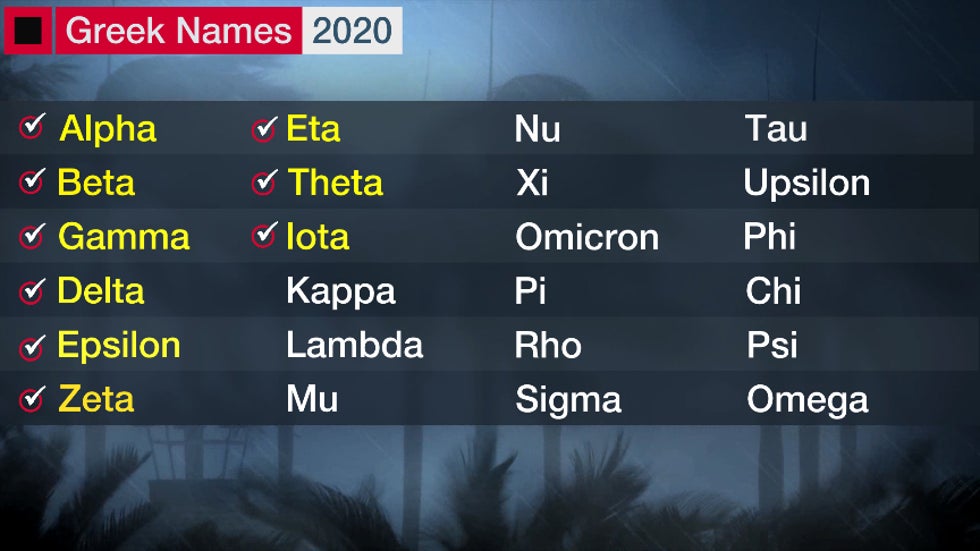
We've had a pair of hurricanes – Laura and then Delta – landfall in southern Louisiana just 14 miles apart, and in Nicaragua – Eta and Iota – 15 miles apart in the same season.
A record 12 storms have made a mainland U.S. landfall.
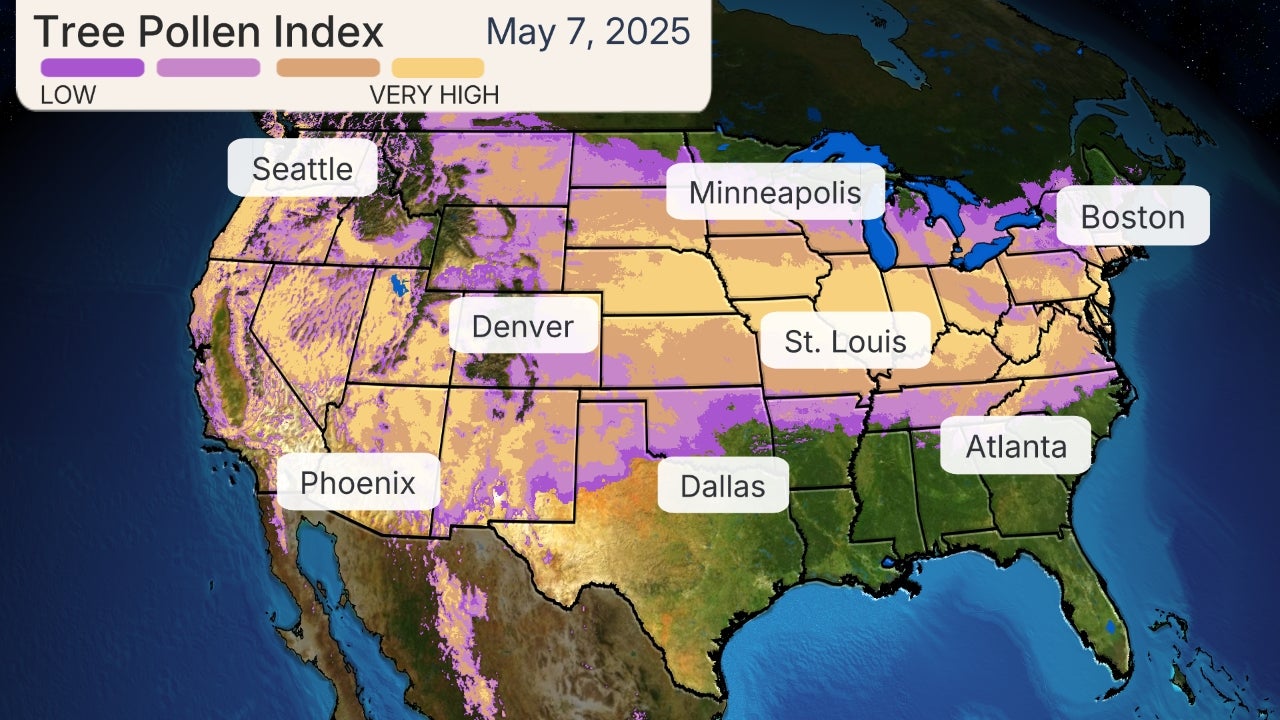 2020 Hurricane Season Tracks
2020 Hurricane Season TracksBut, unwelcome as it may be at the end of a record-breaking season, there is historical precedence for "postseason storms."
The Season Doesn't Capture All Storms
Officially, the Atlantic hurricane season runs from June 1 through Nov. 30. That time frame was selected to encompass 97% of all Atlantic tropical storms and hurricanes, according to NOAA's Hurricane Research Division.
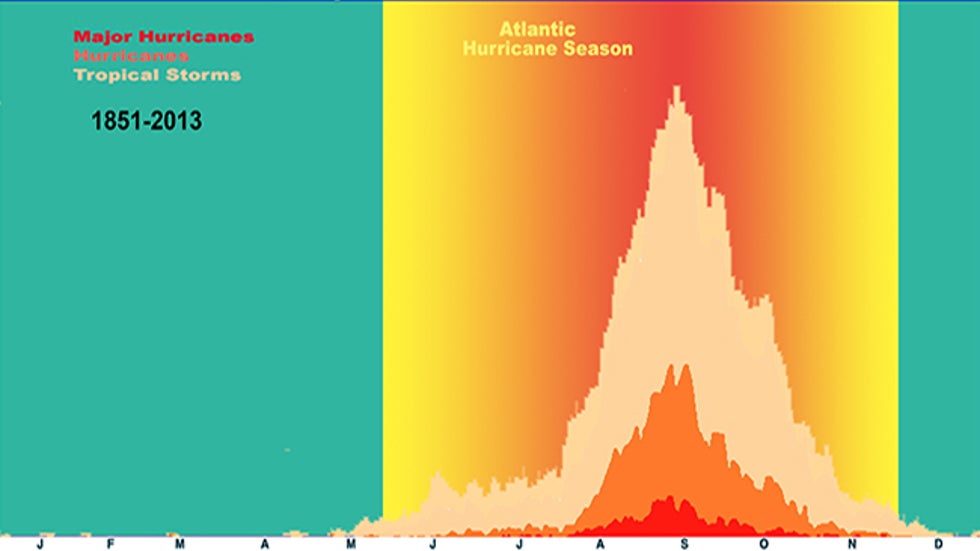 Tropical storms, hurricanes and major hurricanes in the Atlantic Basin, by month, from 1851 to 2013. The June 1 to Nov. 30 hurricane season is highlighted in the warmer colors. A few named storms are shown in other times of year in the teal-colored sections of the graph.
Tropical storms, hurricanes and major hurricanes in the Atlantic Basin, by month, from 1851 to 2013. The June 1 to Nov. 30 hurricane season is highlighted in the warmer colors. A few named storms are shown in other times of year in the teal-colored sections of the graph.But what about the other 3%?
You can see in the NOAA graph above that a small number of tropical storms and even hurricanes have occurred primarily in May and December, but also in every other month outside of hurricane season.
Past Decembers, Januaries and Februaries
According to NOAA's Best Track Database, 10 storms have formed in December, and another four storms formed in either January or February from 1950 through 2019.
Four of those postseason storms became hurricanes, most recently Hurricane Alex in January 2016.
As seen in the track map below, most of these storms in the winter months occurred in the central Atlantic Ocean far from land.
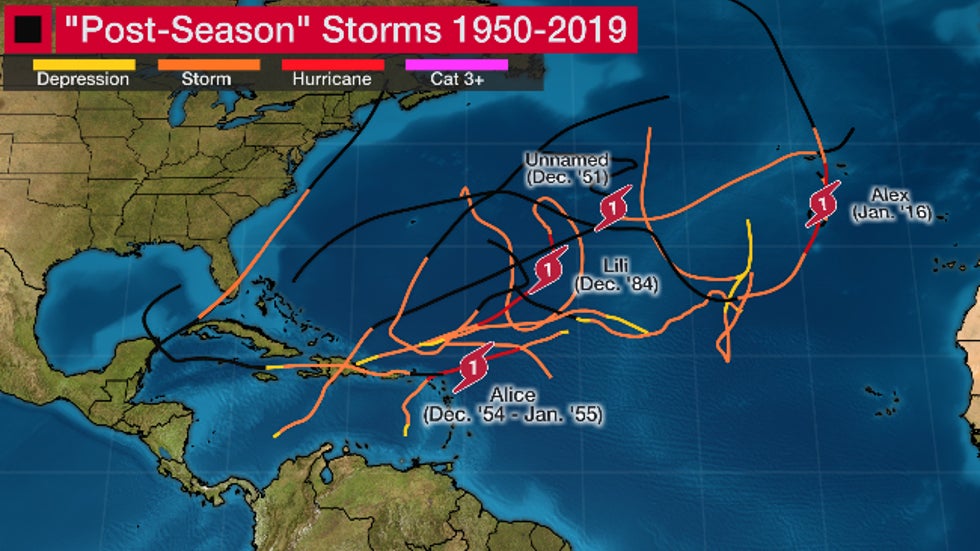 Tracks of 14 storms that developed in December, January or February since 1950. Locations of the four hurricanes are labeled and denoted by icons.
Tracks of 14 storms that developed in December, January or February since 1950. Locations of the four hurricanes are labeled and denoted by icons.In 2003, a pair of tropical storms, Odette and Peter, formed within three days of each other in early December. Odette was the first December tropical storm to form in the Caribbean Sea.
The prolific 2005 season generated its final storm, Zeta, on Dec. 30, lasting until Jan. 7 in the central Atlantic. Earlier in December 2005, Epsilon became a hurricane in the central Atlantic.
Did Any Affect Land?
After November, it's extremely difficult to get a tropical storm to form anywhere near the mainland U.S., much less have it pulled toward the mainland.
The winter jet stream usually kicks into high gear in the Lower 48 states, ushering in colder, drier air to the continental U.S. and also cooling water in the Gulf of Mexico and off the East Coast.
Since 1950, only one such postseason storm affected the mainland U.S., a freak early February 1952 tropical storm which brushed across the Florida Peninsula.
But a number of these postseason storms impacted other land areas.
Alex in January 2016 made landfall in the Azores as a tropical storm.
Hurricane Alice backed southwestward over the northern Leeward Islands just after New Year's Day 1955. Homes, businesses and crops were damaged or destroyed in Anguilla, Saba, Saint Barthélemy, Sint Eustatius and Saint Kitts.
As this predated the era of satellites, meteorologists had to rely on ships and reports from other islands to piece together the development and approach of this small hurricane.
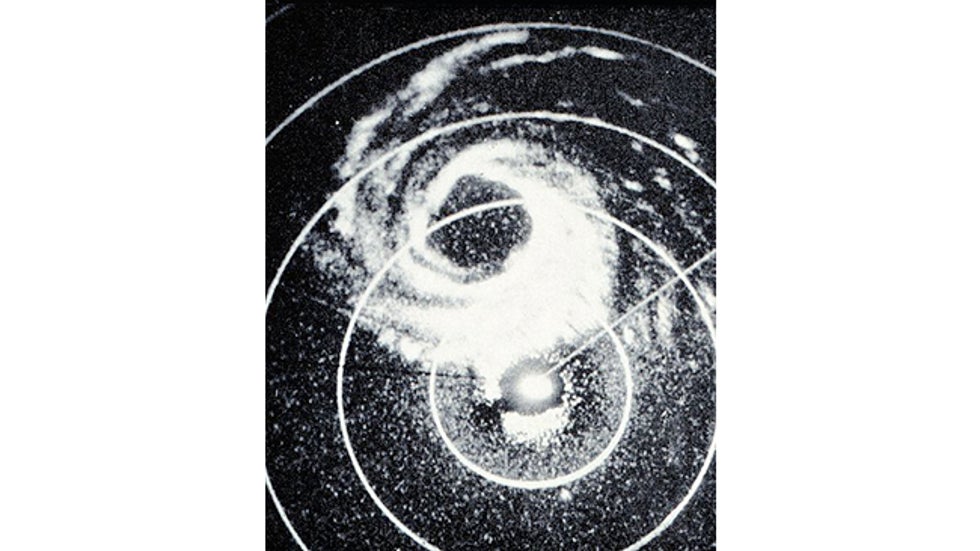 A radar image from the USS Midway of Hurricane Alice northeast of the British Virgin Islands on Jan. 1, 1955.
A radar image from the USS Midway of Hurricane Alice northeast of the British Virgin Islands on Jan. 1, 1955.The aforementioned Tropical Storm Odette in 2003 and also Tropical Storm Olga in 2007 each plowed through Hispaniola, triggering deadly flash flooding. Olga claimed at least 22 lives in the Dominican Republic.
The Weather Company’s primary journalistic mission is to report on breaking weather news, the environment and the importance of science to our lives. This story does not necessarily represent the position of our parent company, IBM.
The Weather Company’s primary journalistic mission is to report on breaking weather news, the environment and the importance of science to our lives. This story does not necessarily represent the position of our parent company, IBM.

No comments:
Post a Comment